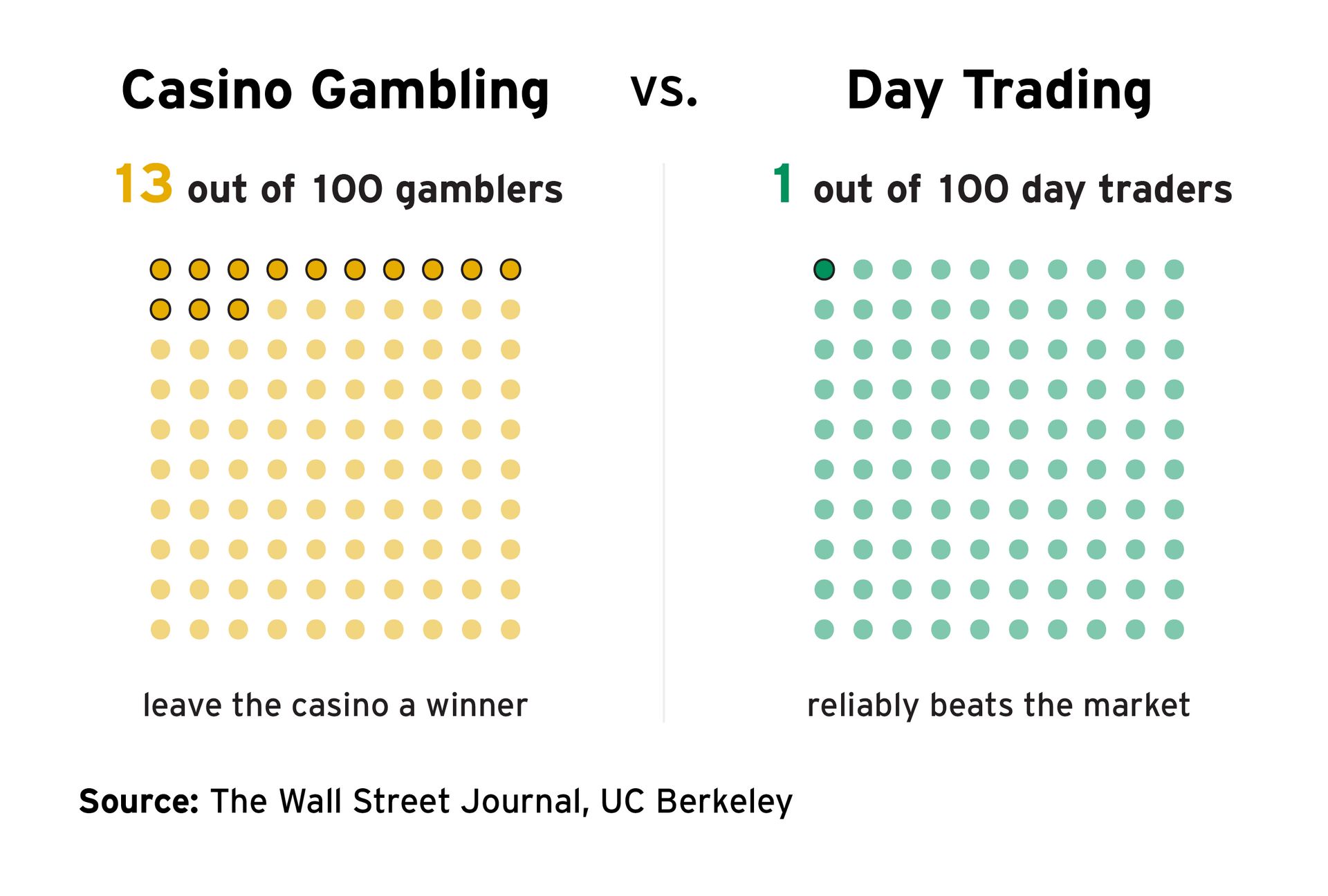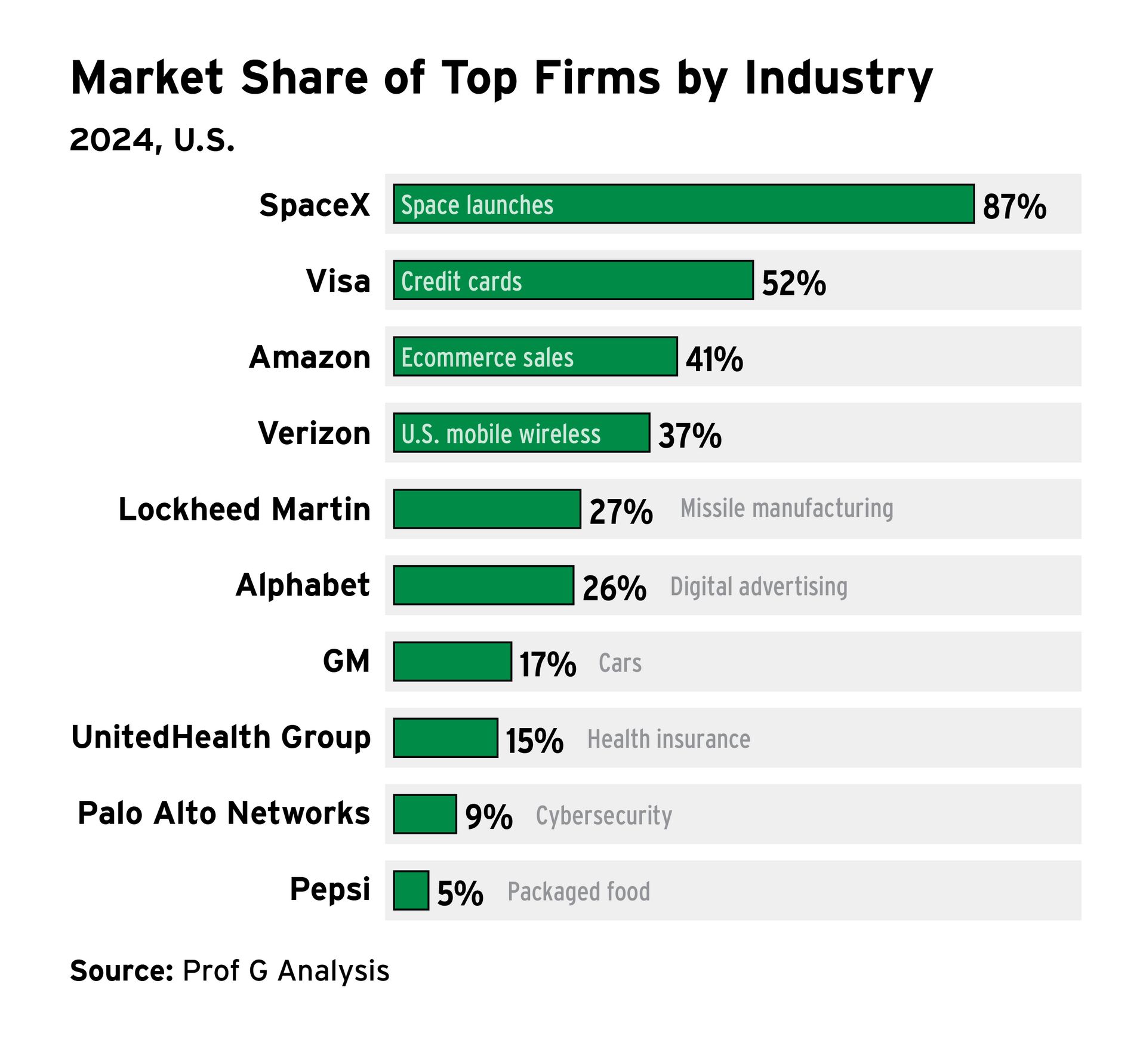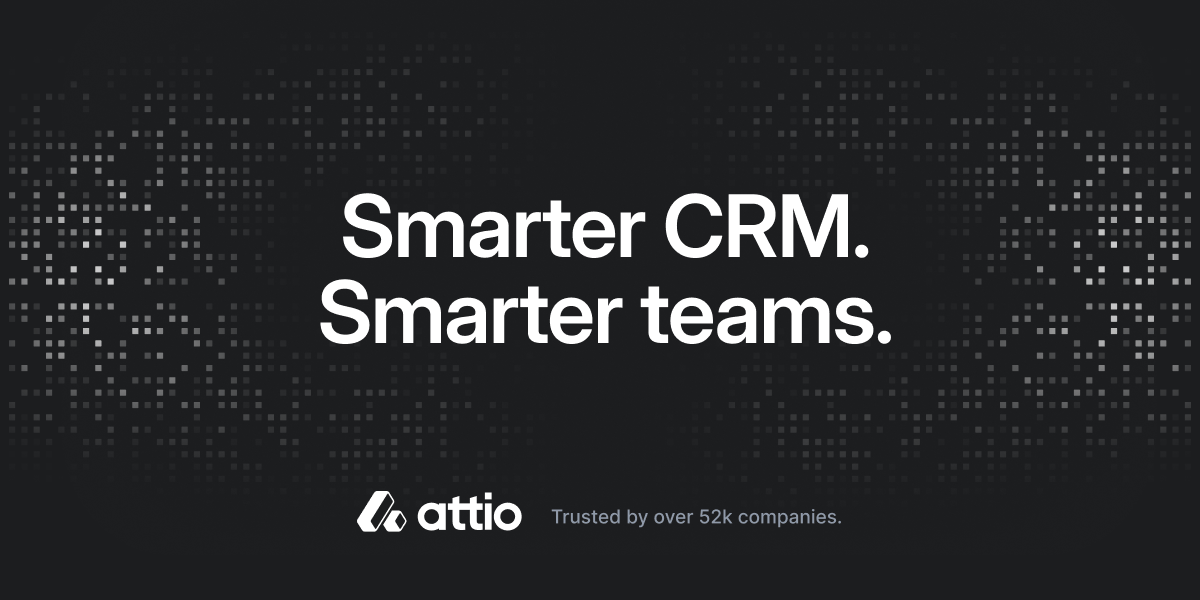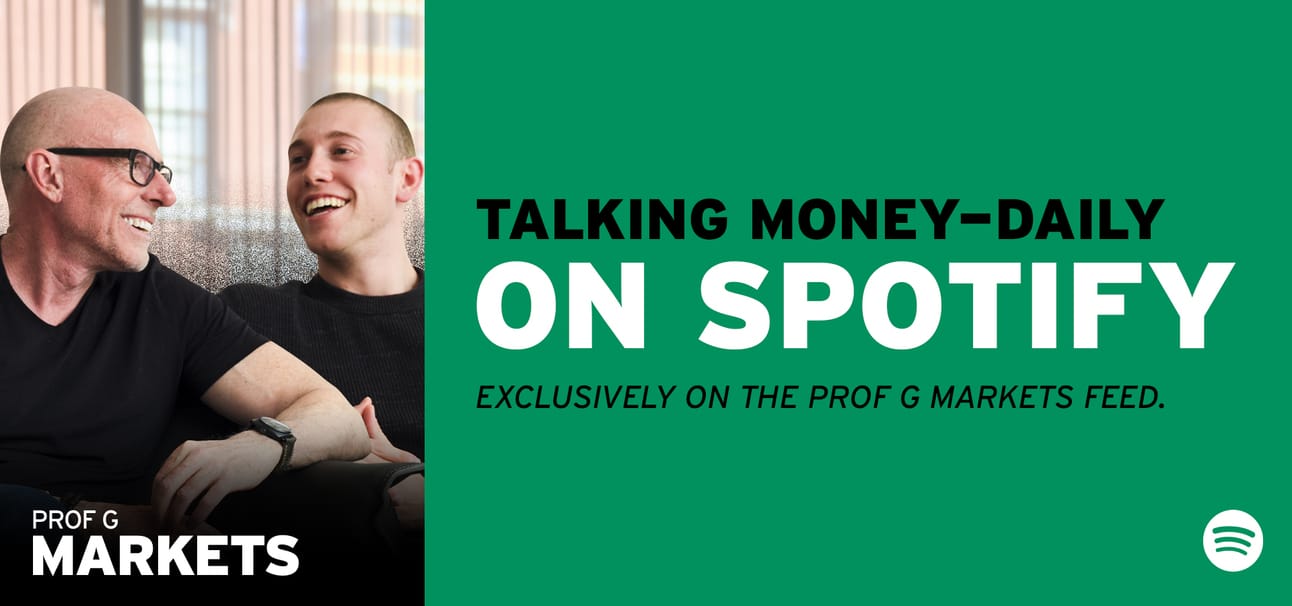

⅓
1 in 3 American teens has prediabetes.
TL;DR
CPI vs. PPI: The inflation detail everyone misses
The biggest trading quarter in market history
The most important monopoly no one is talking about
Newsletter exclusive: Is Substack worth $1.1 billion?
CPI vs. PPI: The Crucial Inflation Detail Everyone’s Missing
Last week’s inflation data painted a mixed picture of how tariffs might be impacting the economy. The Consumer Price Index (CPI) rose 2.7% in June, while the Producer Price Index (PPI) was flat month over month.
Key drivers of the CPI increase included tariff-sensitive categories: appliances, groceries, apparel, and home furnishings.
The divergence between CPI and PPI sparked debate: Some pointed to CPI as evidence that inflation is returning, while others cited the flat PPI to argue otherwise.
But a key distinction is often overlooked: The PPI measures prices received by domestic producers for goods and services produced in the U.S. It excludes imports. In contrast, the CPI captures the prices consumers pay, including imported goods subject to tariffs. Using PPI to dismiss tariff-driven inflation in the CPI misses the point.


The CPI and PPI should be neutral economic indicators about what is happening in the economy. Instead, they’re politicized. Who would have been talking about the difference between the CPI and the PPI five, six, seven years ago? But now this is a giant debate on Twitter and we’re all going crazy about it.

This is like modern art. You see in it what you want to see in it. Catastrophists like me have been wrong. I thought that the economy and the markets were going to register more impact from what I believe are just irrational, low-IQ economic policies. I’ve predicted it will all come back to bite us in the ass, but, having said that, the economy is grinding on. Markets are hitting all-time highs. Inflation is up 2.7%, close to the 2% target. It’s just hard to argue with.
So what does this inflation number mean? Tell me who’s interpreting it, CNN or Fox, because each will interpret it entirely differently. At its core, this is one of the biggest issues facing our society: how consumers interact with and shape information. We aren’t teaching our kids to think critically, to be intellectually honest. Not every viewpoint from either political party is going to be right. You have an obligation to go issue by issue and to acquit yourself of your own opinions.
Q2 2025 Was the Biggest Trading Quarter in History
In the first half of the year, retail investors bought more stocks and ETFs on a net basis than in any other six-month period over the past decade.
Institutional trading also hit new highs. JPMorgan posted its best second quarter ever. Citibank had its strongest second quarter in five years. Goldman Sachs logged the most trading revenue in Wall Street history. Together, the five largest U.S. banks — JP Morgan, Bank of America, Citi, Morgan Stanley, and Goldman Sachs — pulled in $34 billion in trading revenue, up 17% year over year.
It’s been a great year to be a middleman. Brokerage stocks are soaring: Charles Schwab, Coinbase, and Robinhood are up 29%, 61%, and 174% year to date, respectively.
Volatility from tariffs and geopolitical tension drove a “buy the dip” mindset among retail traders. Retail order flow reached a record 36% of the market by late April — up from under 10% pre-pandemic.
What are retail investors buying? According to Business Insider, the top three buys are Nvidia, Tesla, and the S&P 500.
They’re also making riskier plays: Nearly one-third of investors ages 18 to 24 say they’ve bought meme stocks, compared with just 12% of those ages 45 to 54. Meanwhile, since early April, the 858 unprofitable Russell 3000 stocks have returned an average of 36%, outperforming their profitable peers.

A meme stock is one whose price is driven more by online hype than by company performance or economic conditions. Meme stocks took off in 2020 with Reddit’s r/wallstreetbets, where users collectively targeted stocks and drove up demand.

The way you become a billionaire (or create massive shareholder value) is by inventing a product that exploits a flaw in human instincts. Robinhood, casinos, even Polymarket — these companies tap into our belief that we can outsmart the market, that we’re in control. But 90% of trading today is speculation. The equity markets are supposed to be a vehicle for raising capital, but only a small fraction of annual trading volume actually serves that purpose. The rest is noise.
Trading volume is essentially investors freaking out about serious things — tariffs, geopolitics — and convincing themselves they can outmaneuver the chaos. But the truth is, if most people just bought indexes or real estate, and never sold, they’d be wealthier.
Instead, they fall into this trap, this giant industry that profits off of our instinct to act, to hedge, to “do something.” And these bank earnings: They’re not a sign of investor intelligence; they’re a reflection of an incorrect philosophy — that you can respond to and protect yourself from the markets by trading. Be clear — the market couldn’t give a sh*t how smart you think you are. Buy good companies, hold them, and don’t try to outsmart the system.

____________sponsored content ____________
Finally, a powerful CRM—made simple.
Attio is the AI-native CRM built to scale your company from seed stage to category leader. Powerful, flexible, and intuitive to use, Attio is the CRM for the next-generation of teams.
Sync your email and calendar, and Attio instantly builds your CRM—enriching every company, contact, and interaction with actionable insights in seconds.
With Attio, AI isn’t just a feature—it’s the foundation.
Instantly find and route leads with research agents
Get real-time AI insights during customer conversations
Build AI automations for your most complex workflows
Join fast growing teams like Flatfile, Replicate, Modal, and more.
____________sponsored content ____________
The Biggest Monopoly No One Is Talking About
The latest batch of Amazon’s Project Kuiper satellites launched last week on SpaceX’s Falcon 9. This move was crucial as Amazon must deploy half of its Kuiper satellite constellation by next summer to meet FCC requirements.
This partnership follows a three-launch deal struck in December 2023. That agreement came together after Amazon shareholders filed a lawsuit, alleging the company unfairly excluded SpaceX, whose Falcon 9 and Falcon Heavy launches are at least 20% cheaper than rivals, from its initial round of contracts.
SpaceX controls nearly two-thirds of all active satellites and accounted for 87% of U.S. orbital launches in 2024 — 134 in total, up from 96 the year prior. That’s more than the rest of the world combined.
It hasn't just created market dominance; it’s created dependence. Governments rely on SpaceX. Its Starlink product provides real-time battlefield connectivity to the U.S. military and NATO allies, and played a critical role in Ukraine’s early defense.
SpaceX is now worth $400 billion, making it more valuable than OpenAI, Bank of America, Johnson & Johnson, or Coca-Cola, and putting it in the ranks of the 25 most valuable companies in the world.

The most dangerous monopoly you could point to right now is the fact that over half of space launches globally and nearly 90% of the space launches in the U.S. are controlled by one company. So if you think that everything other than Earth in the entire universe might offer economic and geopolitical advantage at some point, one company controlling this much of it is probably not a good idea.
My guess is the lawyers at SpaceX flagged this. They likely told Elon: At some point the FTC and the DOJ are gonna notice that we have the strongest monopoly in history on what may be actually, literally, and figuratively, the final frontier. One way to avoid scrutiny would be to lease this capacity out to other firms, including to competitors.
Both organizations saw good reasons to work together. Amazon has a fiduciary obligation to its shareholders to put its satellites into space for the lowest cost possible, regardless of how distasteful Project Kuiper’s leadership finds SpaceX or Elon Musk.

Newsletter Exclusive: Substack Is Now Valued Like a Rocket Company
Substack, a newsletter platform with a social media side hustle, is now valued like a space monopoly. Last week, the company announced a $100 million funding round at a $1.1 billion valuation, up from $650 million in 2021. With $45 million in annual recurring revenue, that’s a 24x sales multiple. For context: SpaceX is reportedly raising at a 25x multiple.
While it's not rocket science, Substack is quietly reshaping the media business. In March, it topped 5 million paid subscriptions — just four months after crossing the 4 million mark. That’s now more than twice the subscriber base at The Washington Post. Subscriptions to the Post start at $12 per month, while Substack’s minimum is $5 per month.

Substack’s business model was structured to support individual creators. Writers and podcasters keep 87% of their subscription revenue; Substack takes a 10% cut, and 3% goes to Stripe for payment processing. That’s great for creators, but it leaves limited upside for the platform, which must provide publishing tools and distribution to keep creators from jumping ship to Ghost or beehiiv (Prof G’s email platform). The top 10 Substack creators collectively brought in $40 million last year — nearly equal to the company’s total sales.
According to journalist and former Verge editor Casey Newton, this is the reason the company’s first attempt to raise a Series C failed. At the time, the company was generating around $9 million in revenue — far below the $100 to $150 million investors expected to justify the $1 billion valuation Substack sought. Now, it’s achieved that valuation with just $45 million in revenue, but, crucially, with a new plan to invest in advertising, a business Substack’s founders have repeatedly criticized.
But Substack’s new appeal isn’t just about advertising. It’s one of the few media platforms thriving outside the Google search industrial complex, a position that may insulate it as AI reshapes how consumers find information. When AI Overviews appear in Google results, click-through rates drop by over 34%. That’s brutal for online publishers, who have dubbed recent AI changes the “traffic apocalypse.”
Publishers that attract direct traffic will command a growing premium.
More than 60% of Substack’s traffic is direct, similar to social networks or blue-chip media brands. The fact that a brand founded in 2017 now commands the same level of direct attention as The New York Times (founded in 1851), The Wall Street Journal (1889), or The Washington Post (1877) is remarkable.
Google searches for "Substack" surpassed "newsletter" for the first time ever in 2025.
Substack’s rise also mirrors a broader shift: the migration of influence from institutions to individuals. Jim Acosta, Nicolle Wallace, and Joy Reid have all launched personal podcasts. On Substack, notable journalists like Derek Thompson (The Atlantic), Jennifer Rubin (The Washington Post), and Taylor Lorenz (NYT, WaPo) have amassed large subscriber bases.
The advantages of going independent are clear — more autonomy, more upside, and direct access to an audience. But the risk is just as significant: Without an editorial structure, there’s no fact-checking, no legal review, no institutional standards. Your name becomes your brand, and its strength is determined by the trust you build with your audience. There’s a reason we’re called Prof G Media, a name that stands for a person.
Substack’s new valuation is a bet that the future of media is predicated less on legacy brands and search, and more on direct relationships. We agree with that logic but remain skeptical that the platform’s revenue generation potential supports a billion-dollar price tag.
Is Substack worth $1.1 billion? Let us know what you think in the comments.

Over the next 7 to 14 days, expect a new, hollow, and incendiary headline out of the White House every 24 hours — each one designed to distract from the Epstein files. These announcements will have no chance of being implemented — firing Powell, revoking Rosie O’Donnell’s citizenship, an 85% tariff — but that’s not the point. The goal is to create weapons of mass distraction.

Monica de Bolle, senior fellow at the Peterson Institute, joins Scott and Ed to unpack Latin America’s economic outlook, the impact of tariffs, and which country is best positioned for long-term growth. Listen here.

This app offers free stuff for hot people if they post about it
What happens when most of the adults in boys’ lives are women
Kurt Vonnegut’s letter to high school students


